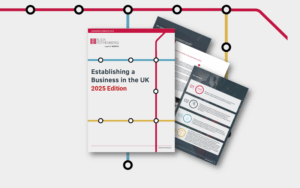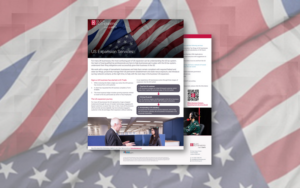Tax Q&A: Temporary workplace relief
Temporary workplace relief (TWR), also known as ‘detached duty relief’, is designed to help employers (and in effect employees) manage the costs associated with extended business travel
Q. What is TWR?
TWR allows employers (or employees, if they are not getting any support from their employers), to treat certain costs associated with extended business trips by their employees as being incurred wholly, exclusively, and necessarily in the course of business. Hence such expenditure can – subject to specific terms and conditions – potentially be provided for the individual employee’s benefit on a tax-free basis.
Q. What costs can be excluded from a UK tax charge under these rules?
The good news is that the relief is actually quite flexible and so there are not really any detailed, prescriptive rules that employers would need to follow in this regard. The rules realise the costs which one can incur in this regard can differ significantly depending upon whether one has to, for example:
a) Relocate to another physical location for a fixed period of time; or
b) Whether one simply has a different (longer) commute and additional commuting costs because one is now covering a different office or worksite for a fixed period of time.
If one has to physically relocate to a different part of the UK (or another country), the TWR rules would allow relief for the following types of expenditure:
1) Employer-provided hotel costs or apartment accommodation in the new location;
2) Ancillary accommodation costs (e.g., hotel meals, utility costs);
3) Property taxes (e.g., council tax);
4) Travel costs (this could include both costs between the normal home and the relevant assignment location and also commuting-type costs).
Alternatively, where an employee continues to live in the regular home, but now has a substantively different commute to the new work location, the employer is able to reimburse the home to work travel costs of the employee on a tax-free basis.
Q. How long is the relief available for?
The relief is classically available for a maximum period of 24 months. However, this is a maximum period – if an assignment is, for example, always expected to last for 36 months, no relief would be available under the TWR rules in that situation.
It is also worth noting that if an assignment is expected to last for 24 months (or less), but is then extended – for example, because of delays and overruns on a building project – the TWR relief is only available until it becomes clear that the project/assignment is expected to last for more than 24 months. However, on the counter side, where a longer assignment is subsequently shortened, so that it is expected to last for no more than 24 months, TWR relief would be available for the period during which it is clear that the assignment will not be for more than 24 months.
Q. What other restrictions apply?
There are other rules that apply and that employers, need to be aware of. These include:
1) What is the position from a family/spousal perspective? For example, if a family is relocated for two years from London to Edinburgh, the accommodation that is provided in Scotland will realistically be larger and more costly to account for the family’s needs than if worker only housing were provided.
2) Similarly in the case of a ‘family secondment’, other ancillary costs will be higher because of the fact that the family has also moved with the employee.
In such situations, therefore, the TWR relief needs to be restricted on a ‘just and reasonable’ basis, to reflect that the costs are only partly ‘employee-linked’. Just and reasonable can obviously be slightly subjective, though there are some clear guidelines in some areas. For example, if a family with two adults and two children moved to Edinburgh, no more than 75% of the council tax could be claimed as tax exempt.
In addition, it is important for employers/advisers to realise that an assignment should not represent ‘all’ or ‘nearly all’ of someone’s period of employment with an employer.
For example, if someone is recruited in London and does one- or two-weeks’ introductory training in the London office before being transferred to Edinburgh on an 18-month fixed term contract, neither they nor the employer would be entitled to TWR relief. This is on the basis that the period in Edinburgh is the substantive workplace for that employment contract and it is not a secondment or temporary posting.
Q. What is the 40% rule?
In the above guidance, I have assumed that the employee has been seconded somewhere for a fixed period of time. However, TWR relief may also be available where someone has a ‘second workplace’, where this second workplace:
a) Represents less than 40% of their duties; and
b) There isn’t a clear pattern to their workdays/working pattern at the second workplace.
Moreover, the 40% rule doesn’t have any time limit to it – so someone who works, for example, for 30% of their time in another location for the employer for a number of years might be eligible for TWR relief for the costs associated with those visits to the second location without a time restriction. However, care does need to be taken vis-à-vis the 40% rule, as HMRC might in some situations argue that an employee has two ‘permanent locations’. In such a situation, travel from home to either office, for example, would simply be ‘regular commuting’ and could not be covered by the employer without triggering a tax charge.
Q. So when could one have two permanent workplaces?
Sadly, as with many areas of tax, the answer to this question can be ‘it depends’. As such, all cases should be considered on a case-by-case basis. However, examples of where HMRC might argue that there is a second permanent workplace could include:
1) The general manager for Scotland is also a board member of the UK company and is required to attend board meetings in London in-person for two days each month. In such a case, the costs associated with the board meetings in London might be considered ‘home to office commuting’ costs and taxable by HMRC.
2) The manager for the local bank branch is required to attend the regional HQ on every Wednesday on an indefinite basis. As there is a clear pattern of visits to the regional HQ, HMRC could argue that this is a second permanent workplace, even though it is less than 40% of the total working time.
Q. What happens if the employer provides no support to the employee for business expenses?
As we all know, not all employers provide their employees with business expense support. Rather, some employers simply expect their employees to cover all their business expenses directly.
The good news is employees in such cases are able to claim TWR relief directly. While this will realistically require them to complete self-assessment tax returns – and they are subject to all the core conditions and restrictions which have been mentioned above – this approach does enable taxpayers to get some tax relief for their TWR-related expenses. However, employees claiming TWR relief will only be getting tax relief – that is, they would not be able to reclaim any NICs on the cash earnings they were originally paid.
Would you like to know more?
If you would like to discuss any of the above, please get in touch with Robert Salter using the details on this page.
Contact Robert

You may also be interested in

Ele Theochari has been appointed as Vice President of The Association of Taxation Technicians

Retailers Both Online and High Street Struggle Amid Rising Staffing Costs













